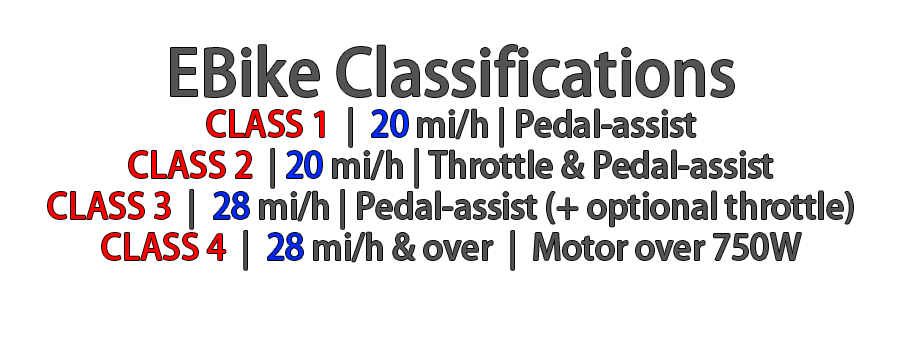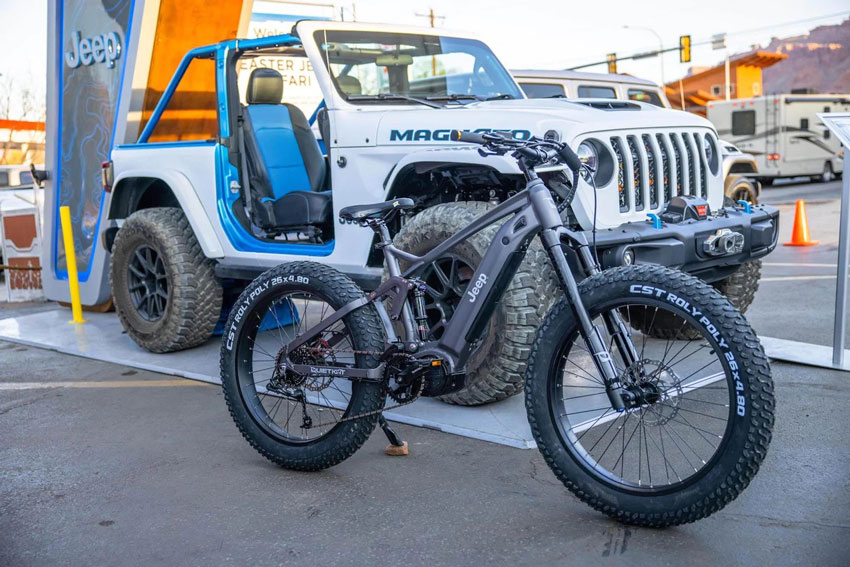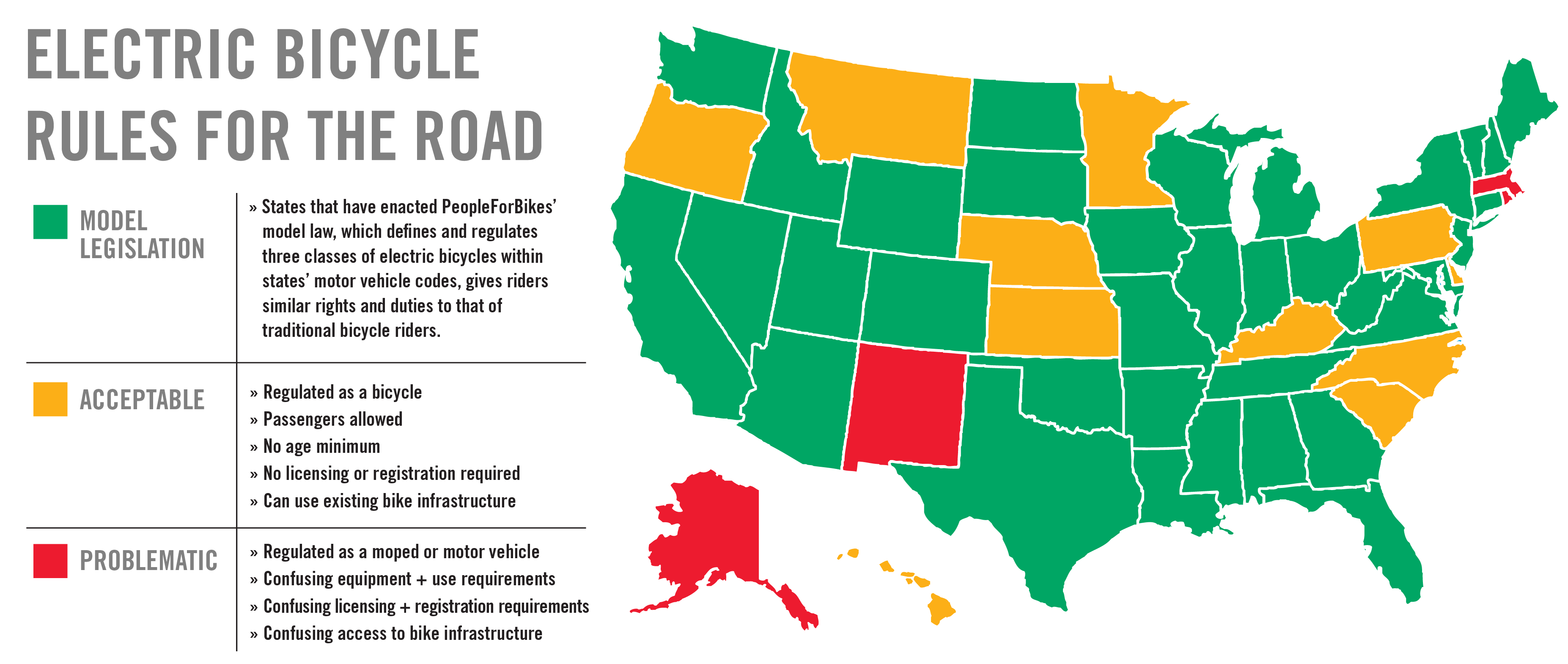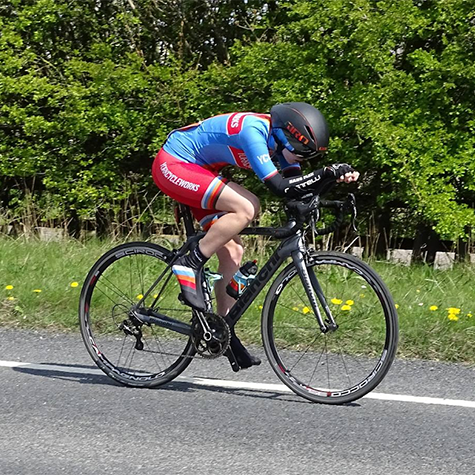Electric bike sales have soared over the last few years due to their rise in popularity.
Bicycles with motors on make great commuting bikes for those who don’t want to arrive at work sweaty, as well as opening up cycling as a hobby to those who otherwise might not be able to access it.
But with new technology comes new territory for lawmakers, and in 2020, the USA announced that electric bikes would not be considered motor vehicles.
This meant that e-bikes would be able to ride on certain trails and areas they weren’t able to previously.

This change saw the clarification of ebike classes, which now run from 1-3 for e-bikes, and anything higher is identified as an electric moped.
These classes of ebikes help manufacturers to understand the limits of what they can produce, and for consumers to understand what type of capabilities the bike they’re buying has.
In this article, we’ll walk you through the different classes and discuss the capabilities and limits of each one.
- Related guide: What Are E-Bikes and How Do They Work?
E-Bike Classes Explained
Class 2: have pedal assistance up to 20mph + throttle assistance up to 20mph.
Class 3: have pedal assistance up to 28mph + may or may not have throttle assistance up to 20mph.
Class 4: may have a top speed of over 28mph and motor wattage over 750W.
Why is the legal limit 750W?
750W = 0.75kW = 1 horsepower
- Related – Electric Bike Laws, Rules & Legislations
Class 1 eBikes

These Co-op electric bikes have pedal assistance of 20mph and don’t have a throttle, so according to eBike classification, they are class 1 eBikes.
Class 1 eBikes are bikes that use pedal-assist to a maximum assisted speed of 20mph.
This means that they are pedal-assist-only eBikes, and they must be without throttle controls, i.e. you must pedal the bike to engage the e-bike motor. They’re also called Pedelecs, (pedal electric cycles) and they must adhere to the class 1 electric bike speed limit of 20mph.
From October 2020 this was written into legislation in the United States and has helped to clarify the confusing market of eBike classes and assistance levels. It also helps to clarify where these bikes can go. Previously, they were unable to be used on certain mountain bike trails and bike paths as they were in a grey area of motor vehicle status. Now, however, they can be ridden in more areas and not just on the road.
Main Features of Class 1 eBikes:
- Pedal assistance
- Assisted speed up to 20mph
- No assistance without pedaling
- The motor must be less than 750W
- Mostly have the same rights and access privileges as regular bikes
Popular Class 1 eBikes are:
Class 2 eBikes

Rad Power Bikes produces 750W eBikes with a throttle.
Class 2 electric bikes also have a maximum assisted speed of 20mph.
However, unlike class 1, they can include throttle assistance without the need for pedaling. This of course doesn’t mean the assistance cuts out if you do start pedaling, but the option is there for you to not pedal and use the throttle. Class 2 e-bike max speed is the same as class 1, at 20mph, and as with class 1 bikes, you can ride them as ‘unassisted’ bikes, i.e. with the motor off, and in the same places.
Class 2 bikes generally look similar to class 1 bikes, except they have the inclusion of a throttle assist. This is usually on the handlebars so can look quite subtle.
Class 2 eBikes have a throttle that assist up to 20mph.
Main features of class 2 eBikes:
- Throttle assistance can be activated through a trigger, button, or twist-grip
- Can be ridden without pedaling
- May also have pedal-assistance
- Maximum assisted speed is 20mph
- The motor must be less than 750 watts
- Mostly have the same rights and access privileges as regular bikes
Popular class 2 eBikes are:
- Rad Power Bikes
- QuietKat eBikes (if bought with a motor of 750W or less)
- Lectric eBikes (Only when the top speed is limited to 20mph)
Class 3 eBikes

These Trek class 3 bicycles assist you up to 28 mph.
Class 3 eBikes are slightly more confusing.
Their maximum assisted speed is set to 28mph making them quite high-speed electric bikes. They must also be equipped with a speedometer to let you know how fast you’re riding. The complicated part is the addition of a throttle. Some states don’t allow throttles at all on the bike (such as California), whereas others only allow the throttle to be used up to 20mp/h, but the pedal assist can continue to 28mph.
Additionally, the motor must have a capacity of less than 750W, and you cannot ride these on bike paths that exist outside of the road. To get around this, manufacturers apply a limit to the throttle speed (20mph). Some speed pedelecs can be adjusted so if you want to ride on a multi-use trail, for example, you can switch the throttle assist to max out at 20mph, and remove the limit when you ride on the road.
Check with your local legislation before using a class 3 eBike to figure out where you’re allowed to ride it.
Main features of class 3 eBikes:
- Pedal assistance
- Max assisted speed is 28mph
- Equipped with speedometer
- The motor must be less than 750W
- Restricted from multi-use paths
- Mostly with an age limit. Depending on the state, the rider must be at least 14, 15, or 16.
- Optional throttle with 20mph assistance
Popular class 3 eBikes:
- Ride1UP Roadster and Prodigy
- Many electric road bikes
- Ride1UP 500 and 700 Series (combined with class 2)
Class 4 eBikes

Many QuietKat ebikes come with 1000W motors and top speeds of over 30 mph.
Class 4 eBikes are not permitted to be used on the road and thus are deemed motorized vehicles which need to be insured and licensed.
This class of bikes use motors more powerful than 750W and class 4 ebike speeds are over 28mph. Some are even capable of being 50mph electric bikes, hence why they need to be licensed and insured. They are in a similar category to electric dirt bikes, with the main difference being the inclusion of pedals on a class 4 eBike.
As class 4 eBikes are only permitted to be used off-road, there is a more limited scope for the type of bikes you will find in this category.
Main features of class 4 eBikes:
- Throttle and/or pedal assistance
- Top speed 28mph and over
- The motor can be more than 750W
- Mostly need registration and licensing
Popular class 4 eBikes:
- QuietKat hunting bikes (with motors over 750W)
- Super Monarch AWD eBikes
- 1,000W Rambo bikes
- Dual motor eBikes
Which electric bike class should you choose?

Image source: REI.com
So which class of eBike should you choose?
Well, it depends on the type of eBike you’re after, and where you are. In Europe, mainly only Class 1 Type eBikes are available, whereas in the US you have a much wider selection.
- Class 1 – Typically where you’ll find the majority of electric bikes, particularly in Europe. Bikes such as commuter, folding, and less powerful road and mountain bikes can be found in this category.
- Class 2 – For those that want assistance up to 28mph and perhaps a throttle assist (up to 20mph). Types of bikes often found in this category include mountain bikes, come commuters and cargo bikes.
- Class 3 – As class 3 eBikes aren’t permitted to ride multi-use trails without limiting the throttle assist, they’re not as popular to produce with manufacturers. That being said, you’ll still find plenty of commuter and road bikes in this category for those that want to go fast.
- Class 4 – Best for those who want to go off-road as class 4 eBikes aren’t permitted on the road as they need to be licensed and insured as they’re classed as motor vehicles. Bikes in this category are often off-road specific hunting bikes, or other outdoor activity focused.
FAQs
Are electric bikes street legal?
Bikes in classes 1-3 are largely street legal, with only class 4 being prohibited from riding in bike lanes etc. Class 3 eBikes need to have a restricted throttle speed of 20mph to be able to ride in bike lanes. For more specific information, check your state’s legislation before riding your eBike.

Image source: Peopleforbikes.org/topics/electric-bikes
When does an electric bike become a moped?
Although the US government clarified the eBike class system last year, some states are yet to implement these rules. In essence, it depends on the state you’re in to determine whether a bike with a motor is a moped or an eBike. According to the government, class 4 eBikes, or 30mph electric bikes are classed as motor vehicles and thus must be insured and licensed.
Do you need a license to ride an electric bike?
In most cases no, for bikes in classes 1-3 you shouldn’t need to. However, this isn’t the case across all states. For specific information relating to your state, check out the PeopleforBikes site.
Do you have to pedal electric bikes?
No, you do not have to pedal all electric bikes. Some of them have both throttle and pedal assistance.
Class 1 – Yes, pedaling assists up to 20mp/h
Class 2 – No, you can use a throttle assist without pedaling
Class 3 – Yes, pedaling assists up to 28mp/h
What is the maximum legal assisted speed of electric bikes?
Class 1 electric bikes include pedal assistance up to 20mph. EBikes in class 2 come with throttle or pedal assistance up to 20mph. Class 3 electric bikes have pedal assistance up to 28mph. Some class 3 eBikes also have a throttle. By law, it can only assist you up to 20mph.


